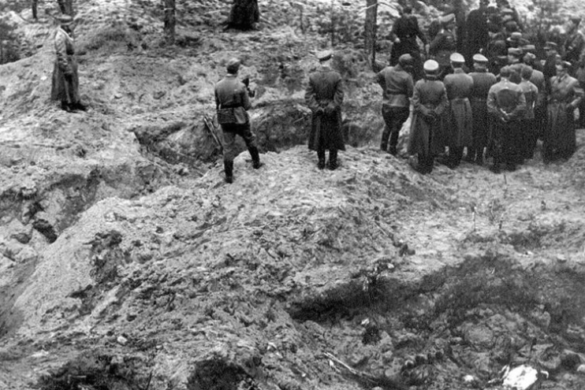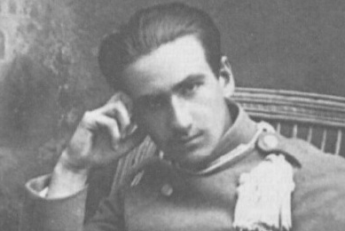
Józef Mackiewicz and his “The Case of the Katyn Massacre”
Józef Mackiewicz’s book “The Case of the Katyn Massacre” is the first and one of the most important books on the Katyn massacre. It was published in eight languages, and favorable reviews of the book appeared in 16 languages of the world. The book was important because it told the truth, and the author himself was present at the exhumation of the corpses of Polish officers from the mass graves discovered in Katyn in February 1943.
The book consists of three parts. In the first part, “From a political conspiracy to an unpunished crime”, he writes about the agreement concluded on September 23, 1939 between the Soviet Union and Germany, which became the beginning of the Second World War. He also mentions the treacherous invasion of the Soviet Union. A key question is asked: fifteen thousand Polish prisoners of war taken on Soviet territory are imprisoned in camps in Starobielsk, Kozielsk and Ostashkov, and in the spring they die without a trace. What happened to these people? The Soviet government imitated the search for the missing military men, while explaining the reason for the disappearance, the POWs allegedly left for their homeland, escaped abroad or supposedly died on the way – there was no other version. It was not until April 1943 that Radio Berlin announced that the local population of Smolensk had indicated to the German authorities the place of secret mass executions carried out by the Bolsheviks. The author of the book gives the answer of the Soviet government after finding the missing prisoners: “The Polish POWs in question were detained in the vicinity of Smolensk in special camps and employed in the construction of roads. They did not manage to evacuate them at the time of the approach of the German troops, so they fell into their hands. Since they are now found murdered, it means that they were murdered by the Germans, and for the purposes of provocation they spread the slanderous message that it was done by the Soviet authorities.”
The apex chapter, part two, “The Lie of the Soviet Communiqué”, refutes the Soviet thesis. (…) In the third part there are appendices and footnotes by the author.
There is no assessment of the writer or emotional descriptions in the work, there are also no sublime epithets, and the descriptions of nature that Mackiewicz liked so much occur when the author returns to his memories: “Rain that is still dripping. Dripping pines. A bird that rightly calls for spring at this time: “Tin-Tin-Tin!” And above it all, a terrible, suffocating corpse stench. No forest in the world reflects such air and one would suddenly like to shout: God! What have they done to our nature! He describes the past events in detail, giving only facts and eyewitness accounts (chapter XVII “Confession of Ivan Kriwozeretsov”). Quotations, reports, testimonies of witnesses, dates, even hours confirm the credibility of the work. In the work, Józef Mackiewicz states that this crime was committed by the Soviet government:
“NO! It is impossible! No human force, no technique would be able to search, unfasten the pockets of these corpses, take out some objects from them, put others in order, put them back together, fasten, press layer after layer! Figure out that some people should wrap something in scraps of newspapers specially selected for the date, make shoe insoles for them!… Put a makhorka wrapped in “Soviet Voice” from April 7, 1940 in the pocket of another!…(…) So, anyway there is no doubt: only the Bolsheviks could have committed the crime.”







